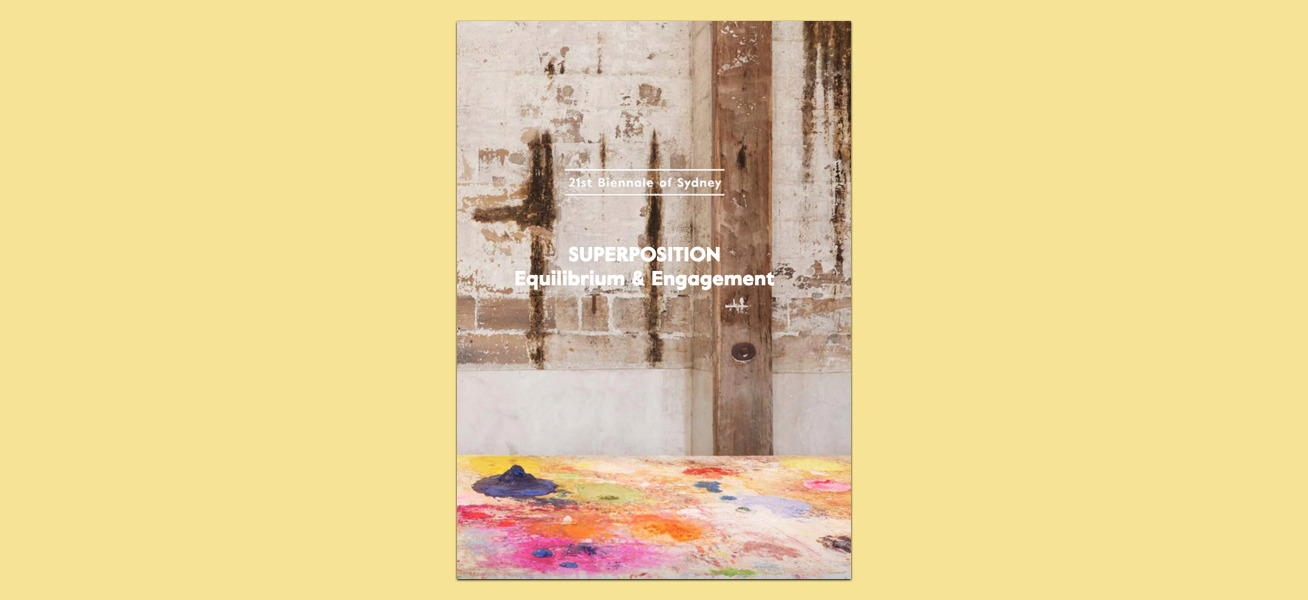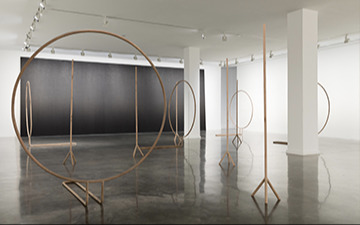
21st Biennale of Sydney
Mit Jai Inn
Sydney, Australia
About
The 21st Biennale of Sydney examines the world today by borrowing the word ‘superposition’, the quantum mechanical term that refers to an overlapping situation. Microscopic substances like electrons are said to be dualistic in nature: they paradoxically exist in the form of waves and granular particles simultaneously. The state of superposition lies across all conceptual levels: from different climates and cultures to views of nature and the cosmic orders, conceptions of Mother Earth and interpretations of land ownership, readings of human history and conditions, the history of modern and contemporary art and the meaning of abstractions. The 21st Biennale of Sydney offers a panoramic view of how they all come together in a state of 'equilibrium', while delving into the workings of individual phenomena, considering the equivalence of these opposing notions through the lens of 'engagement'.
According to the theory of Wuxing in ancient Chinese natural philosophy, everything in this world is made up five main elements: wood, fire, earth, metal and water. Each of these elements gives rise to the next element, either through a process of symbiosis, where one element encourages the formation of the others, or a situation of mutual conflict and antagonism, in which each element resists and suppresses the others. These reciprocal relationships are regulating the cardinal directions, the seasons, colours, our bodily organs and functions, and emotions. In reality, a diversity of elements come together in a state of repeated collision, collapse and rebirth at each level, and today we seem to be witnessing an accelerated process of antagonistic conflict between different standards of value, faiths and beliefs, and political systems.
The participating artists in the 21st Biennale of Sydney were not chosen to represent or symbolise a particular theme. By placing these artworks, oriented towards diverse concerns and issues which resonate with overall perspectives of the Biennale on multiple levels, across seven venues in the city of Sydney, it is my hope that the Biennale as a whole will serve as a microcosm of the history of Earth, the human race, and a condensed version of the history of Sydney. From the repeatedly overlapping value systems contained within, the Biennale will encourage us to consider how all things in this world interact with complementarity in a state of equilibrium and engagement. Taking Sydney in 2018 as a starting point, the 21st Biennale of Sydney SUPERPOSITION: Equilibrium & Engagement promises to be a creative and critical experience for observing the world.
Internationally renowned curator Mami Kataoka is a key figure in analysing socio-historical and generational trends, particularly in the context of Japanese and Asian art, and frequently writes and lectures on contemporary art in Asia.
She has held the position of Chief Curator of the Mori Art Museum (MAM) in Tokyo since 2009, and Senior Curator since 2003. At MAM, Kataoka has curated numerous notable exhibitions including ‘Roppongi Crossing’ (survey show of contemporary Japanese art) (2004, 2013), ‘Sensing Nature: Perception of Nature in Japan’ (2010); as well as major survey shows of prominent artists in Asia such as Tsuyoshi Ozawa, Ai Weiwei, Lee Bul, Makoto Aida, Lee Mingwei and N.S. Harsha.
Mit Jai Inn: Planes (Hover, Erupt, Erode)
Mit Jai Inn
Born 1960 in Chiang Mai, Thailand
Lives and works in Chiang Mai
Mit Jai Inn is considered by many to be a pioneer of Thai contemporary art. Defying conventional boundaries, both physically and conceptually, Mit’s artworks often appear as hybrid objects – paintings that could be sculptures, or sculptures that incorporate painterly methods. Varying in size and format, his paintings disregard traditional methods of display, often appearing as long rolls of canvas that unfurl across the floor or hang suspended in draped loops across gallery walls.
Mit’s practice is a meditation on light and time, each painting closely relating to the site in which it is made. Working at Cockatoo Island in the months leading up to the opening of the 21st Biennale of Sydney, Mit has developed a large-scale installation encompassing multiple elevations. Titled Planes (Hover, Erupt, Erode), 2018, the immersive presentation invokes his open-air Chiang Mai studio while also referencing the history of Cockatoo Island as a site of industrial manufacture. Planes (Hover), 2018, is a series of two-faced, densely layered suspended works that welcome circumnavigation, playing on manifestations of power in the form of the scroll and at the scale of the monument. The tabled work, Planes (Erupt), 2018, reads as a landscape that performs colour interactions, movements and coups. In Planes (Erode), 2018, a field of scraped impasto and pigment signposts are immersed in a sea of water and alcohol. As the 'spirits' are absorbed and consumed over time, the painting will gradually emerge.
Investigating the materiality of the medium and its relationship to the body, Mit engages in a physically rigorous cycle of labour in which he adds, augments, overlays and erases pigment. Working with palette knives and decades-old blocks of dried oil paint which he revives with linseed oil, an activating agent that thins chunks of pigment into a more workable form, Mit pulls and disperses the paint across vast sheets of canvas in varying treatments. This method of slowly building each painting, layer by layer, brings a highly textual, tactile quality to his work. The overarching title of the installation, Planes (Hover, Erupt, Erode), 2018, alludes to the simultaneity of the measurable and the imperceptible. Vertical and horizontal planes bisect and animate the space, inviting observation from both close and distant perspectives.
Commissioned by the Biennale of Sydney with generous support from the Neilson Foundation
Maria Taniguchi: Runaways and Untitled
Maria Taniguchi
Born 1981 in Dumaguete City, Philippines
Lives and works in Manila, Philippines
Maria Taniguchi’s diverse practice encompasses sculpture, painting, drawing, silkscreen, video and photography. Interested in exploring concepts of space and time, in 2008 Taniguchi initiated an ongoing series of works that take the form of large-format canvases covered in a meticulous arrangement of hand-painted bricks. The artist has referred to these labour-intensive, process-driven works as being the fundamental root of her artistic practice, which, at its core, explores the systems and structures of making art and the materiality and architecture of painting itself.
The methodical process of creating the brick paintings is an important objective of the work for Taniguchi; time and effort dedicated to the production of each artwork requiring discipline and a singular focus. When commencing a new painting, Taniguchi prepares the surface by stretching canvas onto a wooden board on the floor and priming it with a layer of grey paint. Drawing the outline of the pattern of bricks onto the monotone surface by hand, she painstakingly fills each rectangle with black acrylic paint. Despite the structural format of the grid and the mechanical process of production, the appearance of the paintings varies considerably from canvas to canvas, dependent on the ratio of paint and water the artist uses. Taniguchi has related the works to an external mechanisation of the body as well as a reference to the cells that make up a biological organism. Intimately connected to Taniguchi’s other works and to each other, the brick paintings represent a small part of the larger, more complete matrix of her practice.
The brick paintings, all untitled and unnumbered, are hybrid objects that the artist considers to be both paintings and sculptural forms. Taniguchi presents a large-scale brick painting at the Museum of Contemporary Art Australia, leaning the canvas against the wall of the gallery space rather than hanging it in a conventional manner. Alongside the painting Taniguchi exhibits a series of sculptural circles and rods made from Java Plum, a hardwood native to India and Southeast Asia. The ‘I’ and ‘O’ shapes create a physical intervention in the gallery space, interrupting the predictable trajectory of the viewer and subtly proposing an alternative experience.
Presentation at the 21st Biennale of Sydney was made possible with generous assistance from Mercedes Zobel; Silverlens Galleries, Manila; and the Australia-ASEAN Council of the Department of Foreign Affairs and Trade


